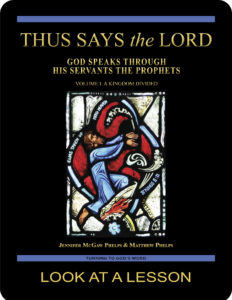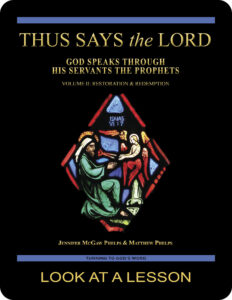consecration
 One of the major focuses of the season of Lent is our pursuit of holiness, which is related to the word consecration. Before engaging earnestly in our Lenten pursuits, it’s worth asking what holiness is so that we can better know how to attain it. In examining this concept, it probably is most useful to return to the Hebrew root since it forms the basis of all Old Testament and Christian understanding.
One of the major focuses of the season of Lent is our pursuit of holiness, which is related to the word consecration. Before engaging earnestly in our Lenten pursuits, it’s worth asking what holiness is so that we can better know how to attain it. In examining this concept, it probably is most useful to return to the Hebrew root since it forms the basis of all Old Testament and Christian understanding.
The concept of holiness in Hebrew is expressed by qâdash and related words. This word means “to be set apart” or “consecrated.” What this meaning suggests is that at its core, being holy is being set apart. This idea carries forward to today in many interesting ways. Take as an example sacred spaces. We don’t use church sanctuaries to hold wedding receptions. Why not? That space is reserved for special use, and by being reserved, the space is made sacred. The same is true with tools and implements used to say the Mass. Setting people, places, or things apart for a specific use is a necessary part of making them sacred.
How does consecration or being set apart allow us to become holy? We can set ourselves apart by limiting what we do. The season of Lent calls us to engage in this sanctification by inviting us to make sacrifices. By giving up for the sake of God things which in themselves are good, we set ourselves apart and in so doing grow in holiness.
related topics: holy; perfect; sacred; temple
you also may like our two-part study of the prophets

 Thus Says the LORD: God Speaks Through His Servants the Prophets—Volume I: A Kingdom Divided examines the prophets in their historical context using the First and Second Books of the Kings and other Old Testament passages written before the Babylonian Exile in 586 B.C. Volume II: Restoration & Redemption looks at the post-exilic prophets. This 51-lesson Catholic Bible study builds on The United Kingdom of Israel: Saul, David & Solomon Foreshadow Christ the King. Click on the books’ covers to view a sample lesson from each volume.
Thus Says the LORD: God Speaks Through His Servants the Prophets—Volume I: A Kingdom Divided examines the prophets in their historical context using the First and Second Books of the Kings and other Old Testament passages written before the Babylonian Exile in 586 B.C. Volume II: Restoration & Redemption looks at the post-exilic prophets. This 51-lesson Catholic Bible study builds on The United Kingdom of Israel: Saul, David & Solomon Foreshadow Christ the King. Click on the books’ covers to view a sample lesson from each volume.
 Click on the picture of the statue of Moses with horns (above) to learn more about Lost in Translation. A new entry is archived each Monday. Contact us to receive Lost in Translation by email every week. You may use any of the contact links on our website to ask Matthew a question.
Click on the picture of the statue of Moses with horns (above) to learn more about Lost in Translation. A new entry is archived each Monday. Contact us to receive Lost in Translation by email every week. You may use any of the contact links on our website to ask Matthew a question.

Leave a Reply
You must be logged in to post a comment.